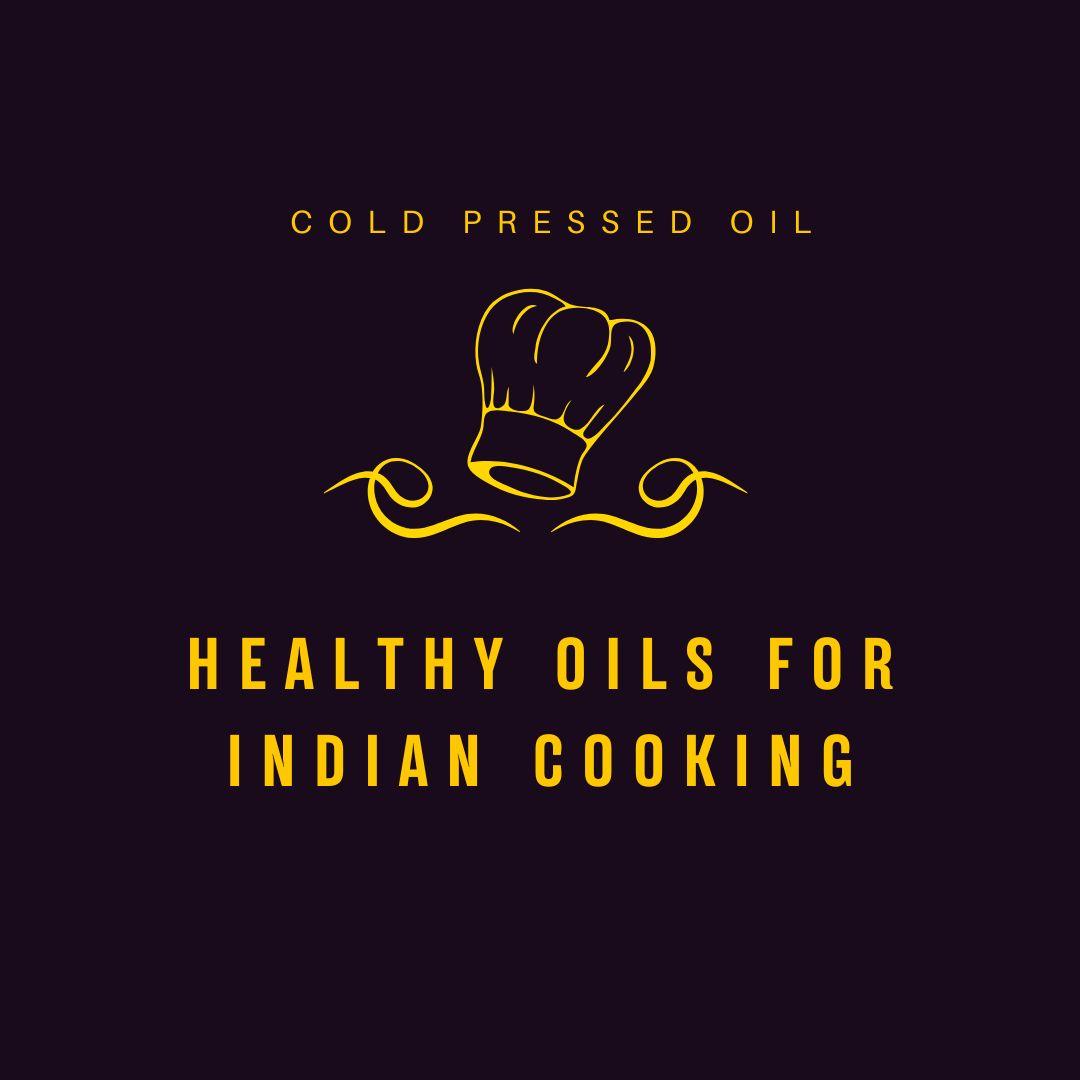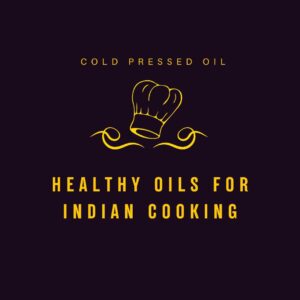
Healthy Oils for Indian Cooking
Indian cuisine is renowned for its rich flavors, diverse ingredients, and unique cooking techniques. Oils play a central role in Indian cooking, not only as a medium for frying and sautéing but also as a flavor enhancer that brings depth to dishes. However, with growing health consciousness, choosing the right oil has become essential to balance taste and nutrition. This guide explores the healthiest oils for Indian cooking, their benefits, and how to use them effectively.

Why Are Cooking Oils Important in Indian Cuisine?
Cooking oils serve multiple purposes in Indian cuisine:
-
Flavor Carrier: Oils help distribute spices evenly across dishes, enhancing their taste.
-
Medium for Cooking: High smoke point oils are ideal for frying and tempering spices.
-
Nutritional Value: Healthy oils provide essential fatty acids and vitamins that support overall health.
Choosing the right oil is crucial to ensure your meals are both delicious and nutritious.
Top Healthy Oils for Indian Cooking
Here’s a detailed look at the healthiest oils for Indian cooking:
1. Mustard Oil
-
Why It’s Healthy: Rich in Omega-3 and Omega-6 fatty acids, mustard oil supports heart health and reduces inflammation.
-
Best For: North Indian dishes like Sarson Ka Saag, Aloo Gobhi, and pickling.
-
Uses: Ideal for frying, tempering spices (tadka), and marinating.
2. Ghee
-
Why It’s Healthy: Ghee is high in healthy fats and contains fat-soluble vitamins like A, D, E, and K. It also boosts digestion.
-
Best For: Sweets like Gajar Ka Halwa, curries, and frying puris or parathas.
-
Uses: Perfect for sautéing spices or preparing rich gravies.
3. Coconut Oil
-
Why It’s Healthy: Contains medium-chain triglycerides (MCTs) that boost metabolism and promote heart health.
-
Best For: South Indian coastal dishes like coconut-based curries, chutneys, and seafood recipes.
-
Uses: Excellent for frying or adding tropical flavor to desserts.
4. Sesame Oil
-
Why It’s Healthy: Packed with antioxidants and healthy fats, sesame oil supports skin health and reduces inflammation.
-
Best For: Dosas, stir-fries, Bengali sweets like Til Pitha.
-
Uses: Great for deep-frying or adding nutty flavor to dishes.
5. Groundnut (Peanut) Oil
-
Why It’s Healthy: Rich in monounsaturated fats (MUFA), groundnut oil helps lower bad cholesterol while maintaining good cholesterol levels.
-
Best For: Western and Southern Indian cuisines; frying snacks like samosas or pakoras.
-
Uses: Ideal for tadkas or deep-frying.
6. Rice Bran Oil
-
Why It’s Healthy: Contains oryzanol that lowers cholesterol levels; high smoke point makes it suitable for frying.
-
Best For: Neutral-flavored dishes where the oil doesn’t overpower other ingredients.
-
Uses: Perfect for deep-frying snacks like bhajiyas or preparing light curries.
7. Extra Virgin Olive Oil
-
Why It’s Healthy: Rich in monounsaturated fats and antioxidants that support heart health; reduces inflammation.
-
Best For: Modern Indian recipes or light cooking techniques.
-
Uses: Drizzle over salads or use for light sautéing to add a healthy twist.
8. Sunflower Oil
-
Why It’s Healthy: Low in saturated fats; rich in Vitamin E; supports skin health.
-
Best For: Everyday cooking like stir-frying vegetables or frying snacks.
-
Uses: Suitable for high-temperature cooking methods.
9. Safflower Oil
-
Why It’s Healthy: Neutral flavor with high smoke point; rich in Omega fatty acids that improve cardiovascular health.
-
Best For: Frying curries or preparing dals without altering their natural taste.
-
Uses: Ideal for deep-frying or stir-frying.
10. Avocado Oil
-
Why It’s Healthy: Contains monounsaturated fats; supports heart health; high smoke point makes it versatile.
-
Best For: Frying vegetables or finishing dishes with a light drizzle.
-
Uses: Suitable for both high-temperature cooking and raw applications.
Comparing Popular Cooking Oils
| Oil Type | Smoke Point | Flavor Strength | Best Uses | Key Health Benefits |
|---|---|---|---|---|
| Mustard Oil | High | Strong | Frying, pickling | Rich in Omega fatty acids; reduces inflammation |
| Ghee | High | Rich | Sweets, tadkas | Boosts digestion; contains fat-soluble vitamins |
| Coconut Oil | Medium | Sweet | Curries, chutneys | Boosts metabolism with MCTs |
| Sesame Oil | Medium | Nutty | Stir-fries, dosas | High in antioxidants |
| Groundnut Oil | High | Mildly Nutty | Deep-frying | Heart-friendly monounsaturated fats |
| Rice Bran Oil | High | Neutral | Everyday cooking | Lowers cholesterol with oryzanol |
| Olive Oil | Low-Medium | Fruity | Salads, light sautéing | Supports heart health |
Tips for Choosing the Right Oil
-
Consider the dish you’re preparing:
-
Use mustard oil for pungent curries or pickles.
-
Opt for ghee when making sweets or rich gravies.
-
-
Pay attention to smoke points:
-
High smoke point oils like groundnut oil are ideal for deep-frying.
-
Low smoke point oils like extra virgin olive oil are better suited for drizzling or light sautéing.
-
-
Look at nutritional benefits:
-
Choose oils rich in monounsaturated fats (e.g., olive oil) if you’re focusing on heart health.
-
-
Factor in regional preferences:
-
Use coconut oil for South Indian recipes or sesame oil for Tamil Nadu-style dishes.
-
Benefits of Using Healthy Oils in Indian Cooking
1. Supports Heart Health
Healthy oils like olive oil and groundnut oil help regulate cholesterol levels by lowering LDL (bad cholesterol) while increasing HDL (good cholesterol).
2. Enhances Flavor
Oils like ghee and mustard oil add depth to dishes while complementing traditional spices.
3. Promotes Digestion
Oils such as ghee aid digestion by improving gut health and nutrient absorption.
4. Reduces Inflammation
Antioxidants found in sesame oil and olive oil reduce inflammation associated with chronic diseases.
5. Improves Skin & Hair Health
Vitamin E-rich oils nourish skin and hair when consumed regularly.
Frequently Asked Questions
What are healthy oils for Indian cooking?
Healthy oils for Indian cooking are those that provide beneficial nutrients, promote heart health, and enhance the flavor of dishes. Some popular options include:
-
Mustard oil
-
Ghee
-
Coconut oil
-
Sesame oil
-
Groundnut (peanut) oil
-
Extra virgin olive oil
-
Rice bran oil
Why is choosing the right cooking oil important?
Choosing the right cooking oil is essential because it can impact your health, flavor profile, and cooking methods. Healthy oils can provide essential fatty acids, vitamins, and antioxidants while reducing the risk of chronic diseases.
What is the smoke point of an oil, and why is it important?
The smoke point is the temperature at which an oil begins to smoke and break down, producing harmful compounds. Choosing an oil with an appropriate smoke point for your cooking method is crucial:
-
High smoke point oils (e.g., mustard oil) are ideal for frying.
-
Low smoke point oils (e.g., extra virgin olive oil) are better suited for drizzling or light sautéing.
Can I use olive oil for Indian cooking?
Yes, extra virgin olive oil can be used in Indian cooking, especially for light sautéing or drizzling over salads. However, it has a lower smoke point than some traditional oils, so it’s not ideal for high-temperature frying.
Is ghee healthier than other cooking oils?
Ghee has several health benefits, including being rich in healthy fats and vitamins. It also has a higher smoke point than many oils, making it suitable for high-temperature cooking. However, moderation is key due to its calorie density.
How should I store cooking oils?
To maintain their quality, store cooking oils in a cool, dark place away from direct sunlight and heat sources. Keeping them in dark glass bottles can help protect them from oxidation.
What is the shelf life of healthy cooking oils?
The shelf life of healthy cooking oils varies depending on the type of oil and storage conditions. Generally, they should be used within 6 to 12 months after opening for optimal freshness. Always check for off smells or flavors before use.
Are all cold pressed oils organic?
Not all cold pressed oils are organic. If you prefer organic options, look for labels indicating that the oil is certified organic to ensure it was produced without synthetic pesticides or fertilizers.
Can I mix different types of cooking oils?
Yes, you can mix different types of cooking oils based on your culinary needs or preferences. However, keep in mind that mixing may alter the flavor profile and nutritional benefits of each oil.
How do I choose quality cooking oil?
When selecting quality cooking oils:
-
Look for labels indicating “cold pressed,” “extra virgin,” or “organic.”
-
Choose oils packaged in dark glass to prevent oxidation.
-
Check for certifications ensuring purity standards.
-
Review the manufacturing date to ensure freshness.
Why should I avoid refined oils?
Refined oils undergo high heat and chemical processing that strips away beneficial nutrients and may introduce harmful compounds. Choosing healthy oils supports a balanced diet and contributes to better overall health.
Conclusion: Choosing the Best Oil for Your Kitchen
The best oil for Indian cooking depends on your culinary needs:
-
If you’re looking for authentic flavors: Mustard oil or ghee are unbeatable choices.
-
For versatile everyday use: Sunflower oil or rice bran oil work well without overpowering flavors.
-
If you’re health-conscious: Olive oil or groundnut oil offer excellent nutritional benefits.
By understanding the unique properties of each oil, you can make informed choices that enhance both the taste and health benefits of your meals!
